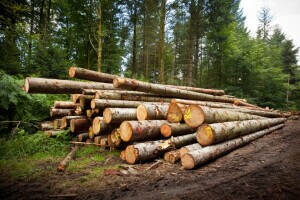
Uncertainty over international trade barriers has caused significant fluctuations in lumber prices in recent months, as quotes and supply levels have varied from sawmill to sawmill, according to Keta Kosman, publisher of Madison’s Lumber Reporter.
“The whipsaw fatigue of conflicting tariff announcements over two months had Western Canadian suppliers hoping to see the market settle down,” Kosman. “Field inventories stayed thin across the continent, thus supply crept ahead of vacillating demand.”
Kosman notes that uncertainty—particularly around tariffs on Canadian lumber entering the U.S.—contributed to delays across North America. Some stakeholders held off on buying lumber altogether, preferring to wait for clarity on tariffs, while others ordered early in hopes of securing delivery ahead of any potential trade restrictions.
“Others decidedly switched their purchasing to Southern Yellow Pine materials from the northern species of Spruce-Pine-Fir,” Kosman says. “This palpable increase of southern pine lumber prices vs. SPF reach a top, as those customers locally within the U.S. received the lumber they needed for ongoing projects.”
“In the greater scope, the entire industry was able to assess the current situation,” she continues. “Buyers and sellers worked together to determine where existing price levels would land.”
Lumber Prices
As April progressed, prices for North American construction framing dimension softwood lumber settled at what Kosman describes as “proper levels,” based on current supply and demand.
“The fact that demand remained quite soft, particularly for the time of year when new home building normally would be increasing, was lost on no one,” Kosman says. “While some uncertainty was resolved [regarding macroeconomic conditions], expectations for the coming spring building season remained unclear.”
In the week ending April 25, the price of the benchmark softwood lumber item—Western Spruce-Pine-Fir 2x4—was $470 per thousand board feet. That was unchanged from the previous week, down 13% from a month earlier, and up 15% from the same week a year ago.
Kosman notes a development in the lumber market is the variance between prices between primary and secondary suppliers. This variance has caused come buyers to remain on the sidelines, waiting for further price corrections.
Lumber Production
According to the most recent data, U.S. sawmill production in January 2025 was 2% below production in January 2024 while Canadian production declined 3.4% over the same period. Kosman says weather played a factor, with the relatively harsher winter in 2025 contributing to slower manufacturing activity.
Data from the Western Wood Products Association indicates U.S. sawmills were running at only 67% of full capacity in January, compared to 72% for the full-year 2024. In Canada, sawmill utilization was 74% of capacity, down just one percentage point compared to the previous year.
“The Canadian sawmills are optimized to run at about 95% utilization rates, while in the U.S. that figure is closer to the lower 80%,” Kosman says. “At this time, there is significant lumber supply able to come back online at existing facilities should demand improve into the summer.”
https://www.builderonline.com/data-analysis/lumber-prices-ease-as-uncertainty-settles_o